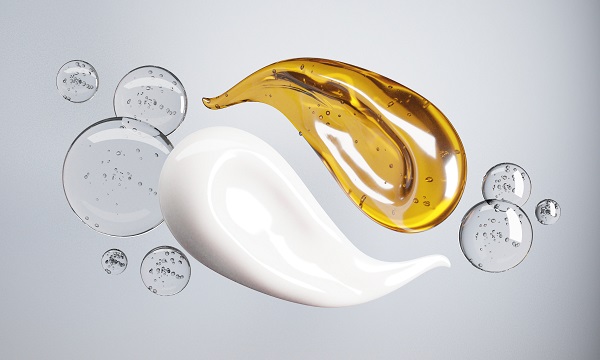Emulsifiers: Secret Ingredients for Accomplishing Perfectly Blended Solutions
Emulsifiers play a vital duty in creating steady combinations of immiscible fluids, such as oil and water. Their unique homes enable them to lower surface stress, which is vital for uniformity in numerous formulations. Comprehending the differences in between natural and artificial emulsifiers can influence item quality significantly. As industries progressively look for to improve structure and life span, the option process for the appropriate emulsifier becomes critical. What aspects should be taken into consideration in this crucial choice?
Comprehending Emulsifiers: What They Are and Just how They Work
Although emulsifiers may appear like a simple addition to formulas, they play a crucial duty in supporting blends of active ingredients that typically do not blend well, such as oil and water. These compounds operate by lowering surface area stress at the user interface between immiscible liquids, allowing them to mix more uniformly. Emulsifiers contain both hydrophilic (water-attracting) and lipophilic (oil-attracting) residential properties, which allow them to anchor themselves at the limit of the two stages. By doing so, they develop a safety barrier that avoids the droplets of one fluid from integrating right into bigger masses, consequently keeping a steady solution. The efficiency of an emulsifier depends on its molecular structure, which affects its capability to stabilize combinations. In different applications, from food items to cosmetics, emulsifiers ensure a consistent texture and look, boosting both performance and consumer allure. Their significance can not be overstated in attaining well-blended formulas.
Types of Emulsifiers: Natural vs. Artificial
Emulsifiers can be broadly classified into 2 kinds: natural and synthetic, each offering unique advantages and applications. All-natural emulsifiers, originated from plant or pet sources, consist of casein, lecithin, and gum tissue arabic (emulsifiers). These emulsifiers are usually favored in clean-label and organic items because of their marginal processing and biocompatibility. Their mild nature makes them ideal for delicate formulations, specifically in food and cosmetics

On the other hand, artificial emulsifiers such as mono- and diglycerides, and polysorbates are manufactured via chemical processes. They are commonly utilized in industrial applications as a result of their stability and effectiveness in developing emulsions. Artificial emulsifiers typically show exceptional efficiency in severe conditions, such as heats or differing pH degrees. The selection between natural and synthetic emulsifiers greatly depends on the particular formula needs, governing factors to consider, and customer preferences, influencing their effective application in various industries.
Functions of Emulsifiers in Food and Cosmetic Formulations
The role of emulsifiers prolongs past plain stablizing; they are basic in achieving the desired texture, shelf, and appearance life of food and cosmetic items. In food formulations, emulsifiers help blend oil and water, producing consistent and smooth appearances necessary for sauces, dressings, and milk products. They lower surface stress, boosting the security of solutions, which protects against splitting up and lengthens quality.
In cosmetics, emulsifiers assure that active ingredients, such as oils and water, mix flawlessly, giving a pleasurable feeling and improving application. emulsifiers. They add to the product's thickness and spreadability, crucial for creams, serums, and creams. Additionally, emulsifiers can encapsulate energetic ingredients, enhancing their circulation and performance in solutions. By regulating appearance and boosting sensory features, emulsifiers play an important duty in conference customer assumptions in both food and cosmetic sectors, guaranteeing items are not just attractive but likewise functionally reliable
Selecting the Right Emulsifier for Your Item

Additionally, the target application-- whether for food, cosmetics, or drugs-- will affect the choice. For example, food-grade emulsifiers must follow safety and security policies, while aesthetic emulsifiers might require skin compatibility. Evaluating aspects site here such as HLB (Hydrophilic-Lipophilic Equilibrium) assists in anticipating emulsifier behavior in details formulations. Ultimately, a complete analysis of both governing considerations and useful demands is necessary to pick the most effective emulsifier, making certain the final product fulfills the desired high quality and security criteria.

Tips for Effective Emulsion Development and Stability
Achieving effective emulsion development and security needs mindful interest to several essential aspects. The selection of emulsifier plays a critical duty; it ought to be suitable with the oil and water phases to assure efficient stablizing. Second, the ratio of oil to water have to be balanced, as an incorrect proportion can result in instability. Third, the blending procedure needs to be managed; high shear blending can help accomplish smaller sized bead sizes, improving security.
Temperature likewise influences emulsion stability; keeping optimal temperature levels throughout solution stops premature splitting up. In addition, incorporating stabilizers such as thickeners can even more improve thickness, reducing the possibility of phase splitting up. Performing thorough stability examinations after solution will certainly aid identify potential issues, allowing for adjustments before final production. By adhering to these guidelines, formulators can accomplish dependable and consistent emulsions that maintain their wanted buildings over time.
Regularly Asked Concerns
Can Emulsifiers Be Made Use Of in Vegan Formulations?
Yes, emulsifiers can be made use of in vegan formulas. Numerous plant-based emulsifiers, such as lecithin from soy or sunflower, offer efficient mixing without animal-derived components, making them appropriate for a range of vegan products.
What Prevail Irritants in Emulsifiers?
Usual irritants in emulsifiers consist of soy, milk, and eggs, as specific emulsifiers are originated from these sources. In addition, some people may Full Report react to ingredients or preservatives made use of together with emulsifiers in various solutions.

Just How Do Emulsifiers Influence Life Span of Products?
Emulsifiers enhance item stability by avoiding separation of components, thus prolonging life span. They reduce putridity triggered by microbial growth and oxidation, causing long term quality and enhanced high quality in different food and cosmetic formulations.
Exist Any Health Problems Connected With Emulsifiers?
Research study indicates possible health concerns associated with emulsifiers, including intestine microbiome changes and swelling. While regulatory bodies generally regard them secure, continuous research studies remain to explore lasting results on health and total well-being.
Can Emulsifiers Improve Taste or Aroma in Formulations?
Emulsifiers can boost flavor and fragrance in formulations by improving component diffusion and security. This leads to a much more uniform item, enabling tastes to combine efficiently, ultimately leading to an extra satisfying sensory experience Clicking Here for consumers.
Emulsifiers might seem like a straightforward addition to formulas, they play an important duty in stabilizing mixes of active ingredients that commonly do not blend well, such as oil and water. In food solutions, emulsifiers help blend oil and water, producing smooth and consistent structures necessary for sauces, dressings, and milk products. Food-grade emulsifiers ought to abide with safety and security regulations, while aesthetic emulsifiers may call for skin compatibility. Typical allergens in emulsifiers include soy, dairy products, and eggs, as particular emulsifiers are obtained from these sources. Emulsifiers can improve flavor and scent in solutions by improving active ingredient dispersion and stability.